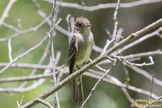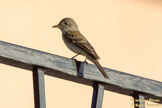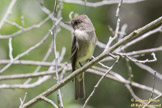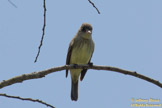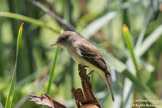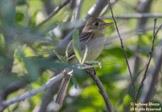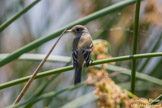Birds Of Southern California
Willow Flycatcher (Empidonax traillii)
The Willow Flycatcher is typically a May arrival here in Orange County and when compared against other similar flycatchers such as the Pacific-slope, Gray, Dusky and Least, the Willow Flycatcher has an indistinct white eye ring. It is similar to the Western Wood-Pewee and the time frames of their presence in Orange County overlap however the Western Wood-Pewee is in fact larger in size and their calls are quite different. Here's more from Wikipedia: The willow flycatcher (Empidonax traillii) is a small insect-eating, neotropical migrant bird of the tyrant flycatcher family. There are four subspecies of the willow flycatcher currently recognized, all of which breed in North America (including three subspecies which breed in California). Empidonax flycatchers are almost impossible to tell apart in the field so biologists use their songs to distinguish between them.] The binomial commemorates the Scottish zoologist Thomas Stewart Traill. Adults have brown-olive upperparts, darker on the wings and tail, with whitish underparts; they have an indistinct white eye ring, white wing bars and a small bill. The breast is washed with olive-gray. The upper part of the bill is gray; the lower part is orangish. At one time, this bird and the alder flycatcher (Empidonax alnorum) were considered to be a single species, Traill's flycatcher. The willow and alder flycatchers were considered the same species until the 1970s. Their song is the only reliable method to tell them apart in the field. Their breeding habitat is deciduous thickets, especially willows and often near water, across the United States and southern Canada. They make a cup nest in a vertical fork in a shrub or tree. These neotropical birds migrate to Mexico and Central America, and in small numbers as far south as Ecuador in South America, often selecting winter habitat near water. Willow flycatchers travel approximately 1,500–8,000 km (930–4,970 mi) each way between wintering and breeding areas.[7] They wait on a perch near the top of a shrub and fly out to catch insects in flight, also sometimes picking insects from foliage while hovering. They may eat some berries. This bird's song is a sneezed fitz-bew. The call is a dry whit. This bird competes for habitat with the alder flycatcher where their ranges overlap. More on wikipedia here: http://en.wikipedia.org/wiki/Willow_flycatcher
